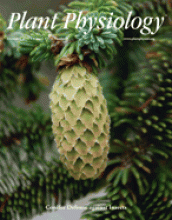Ver ítem
- xmlui.general.dspace_homeCentros Regionales y EEAsCentro Regional Buenos Aires NorteEEA San PedroArtículos científicosxmlui.ArtifactBrowser.ItemViewer.trail
- Inicio
- Centros Regionales y EEAs
- Centro Regional Buenos Aires Norte
- EEA San Pedro
- Artículos científicos
- Ver ítem
Metabolic profiling during peach fruit development and ripening reveals the metabolic networks that underpin each developmental stage
Resumen
Fruit from rosaceous species collectively display a great variety of flavors and textures as well as a generally high content of nutritionally beneficial metabolites. However, relatively little analysis of metabolic networks in rosaceous fruit has been reported. Among rosaceous species, peach (Prunus persica) has stone fruits composed of a juicy mesocarp and lignified endocarp. Here, peach mesocarp metabolic networks were studied across development using
[ver mas...]
Fruit from rosaceous species collectively display a great variety of flavors and textures as well as a generally high content of nutritionally beneficial metabolites. However, relatively little analysis of metabolic networks in rosaceous fruit has been reported. Among rosaceous species, peach (Prunus persica) has stone fruits composed of a juicy mesocarp and lignified endocarp. Here, peach mesocarp metabolic networks were studied across development using metabolomics and analysis of key regulatory enzymes. Principal component analysis of peach metabolic composition revealed clear metabolic shifts from early through late development stages and subsequently during postharvest ripening. Early developmental stages were characterized by a substantial decrease in protein abundance and high levels of bioactive polyphenols and amino acids, which are substrates for the phenylpropanoid and lignin pathways during stone hardening. Sucrose levels showed a large increase during development, reflecting translocation from the leaf, while the importance of galactinol and raffinose is also inferred. Our study further suggests that posttranscriptional mechanisms are key for metabolic regulation at early stages. In contrast to early developmental stages, a decrease in amino acid levels is coupled to an induction of transcripts encoding amino acid and organic acid catabolic enzymes during ripening. These data are consistent with the mobilization of amino acids to support respiration. In addition, sucrose cycling, suggested by the parallel increase of transcripts encoding sucrose degradative and synthetic enzymes, appears to operate during postharvest ripening. When taken together, these data highlight singular metabolic programs for peach development and may allow the identification of key factors related to agronomic traits of this important crop species.
[Cerrar]

Autor
Lombrado, Verónica A.;
Osorio, Sonia;
Borsani, Julia;
Lauxmann, Martín Alexander;
Bustamante, Claudia Anabel;
Budde, Claudio Olaf;
Andreo, Carlos Santiago;
Lara, María Valeria;
Fernie, Alisdair R.;
Drincovich, María Fabiana;
Fuente
Plant Physiology 157 (4) : 1696-1710 (dec. 2011).
Fecha
2011-12
ISSN
0032-0889
1532-2548e
1532-2548e
Formato
pdf
Tipo de documento
artículo
Palabras Claves
Derechos de acceso
Restringido
 Excepto donde se diga explicitamente, este item se publica bajo la siguiente descripción: Creative Commons Attribution-NonCommercial-ShareAlike 2.5 Unported (CC BY-NC-SA 2.5)
Excepto donde se diga explicitamente, este item se publica bajo la siguiente descripción: Creative Commons Attribution-NonCommercial-ShareAlike 2.5 Unported (CC BY-NC-SA 2.5)

